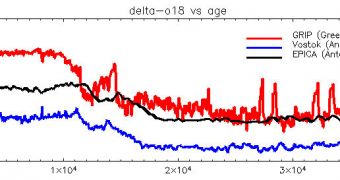A group of investigators was recently able to gain a wealth of new knowledge about how the climate system reacted to elevated levels of atmospheric carbon dioxide (CO2), during one of our planet's warmest periods ever.
What the researchers did was basically create the first comprehensive reconstruction of that time. Their model included things such as ocean temperature levels, equatorial heat transport patterns, and also greenhouse gas concentrations in the atmosphere.
Establishing the effects that all of these factors had on Earth's climate was the main objective for the new investigation. The experts behind the work had access to a large volume of data, which testifies towards the reliability of their model.
Using the conclusions derived from the new study, climate experts could become able to create even more accurate climate predictions for the future. Additionally, this could also provide us with a deeper understanding of the mechanisms and processes underlying current global warming.
Scientists selected the mid-Pliocene warm period as their study target. This epoch stretched between 3.3 and 3 million years ago, and the researchers analyzed what happened there by studying fossils.
Officials from the United States Geological Survey (USGS) conduct the collaboration of researchers that carried out the study. The group was called Pliocene Research, Interpretation and Synoptic Mapping (PRISM).
Through its efforts, the PRISM group has demonstrated once again the importance of knowing Earth's past in determining how its climate will evolve in the future. During the mid-Pliocene warm period, temperatures were some 2.5 degrees Celsius (4.5°F) above current levels.
According to the UN Intergovernmental Panel on Climate Change (IPCC), the 21st Century could become equally as warm, if steps to reduce greenhouse gas concentrations in the atmosphere are not taken.
“Exploring the mid-Pliocene will further understanding on the role of ocean circulation in a warming world, the impacts of altered storm tracks, polar versus tropical sensitivity, and the impacts of altered atmospheric CO2 and oceanic energy transport systems,” Harry Dowsett explains.
The USGS scientist was also the lead scientist for PRISM, Daily Galaxy reports.
“We used fossils dated to the mid-Pliocene to reconstruct sea surface and deepwater ocean temperatures, and will continue research by studying specific geographic areas, vegetation, sea ice extent and other environmenal characteristics during the Pliocene,” he concludes.

 14 DAY TRIAL //
14 DAY TRIAL //